Abstract
1. It has been previously shown that in a relaxed target muscle, at short interstimulus intervals (ISIs) (up to 6 ms) a conditioning subthreshold transcranial magnetic stimulus can cause suppression of the EMG response evoked by a magnetic test stimulus. At longer ISIs (7-15 ms) facilitation of the test response is seen. This type of inhibition has been termed ipsilateral cortico-cortical inhibition. 2. The effect of a minimal tonic contraction on ipsilateral cortico-cortical inhibition has been investigated in the first dorsal interrosseous (FDI). 3. At short ISIs there was significantly less inhibition of the test response during the maintenance of minimal voluntary tonic contraction of the target muscle (FDI). 4. At longer ISIs (7-15 ms) there was significantly less facilitation of the test response during a tonic contraction than during relaxation. 5. Minimal activation of an ipsilateral proximal muscle (biceps) had no significant effect on the degree of inhibition seen in the relaxed target muscle (FDI). 6. We suggest that voluntary drive reduces the excitability of inhibitory circuits in cortical areas that project to the active muscle.
Full text
PDF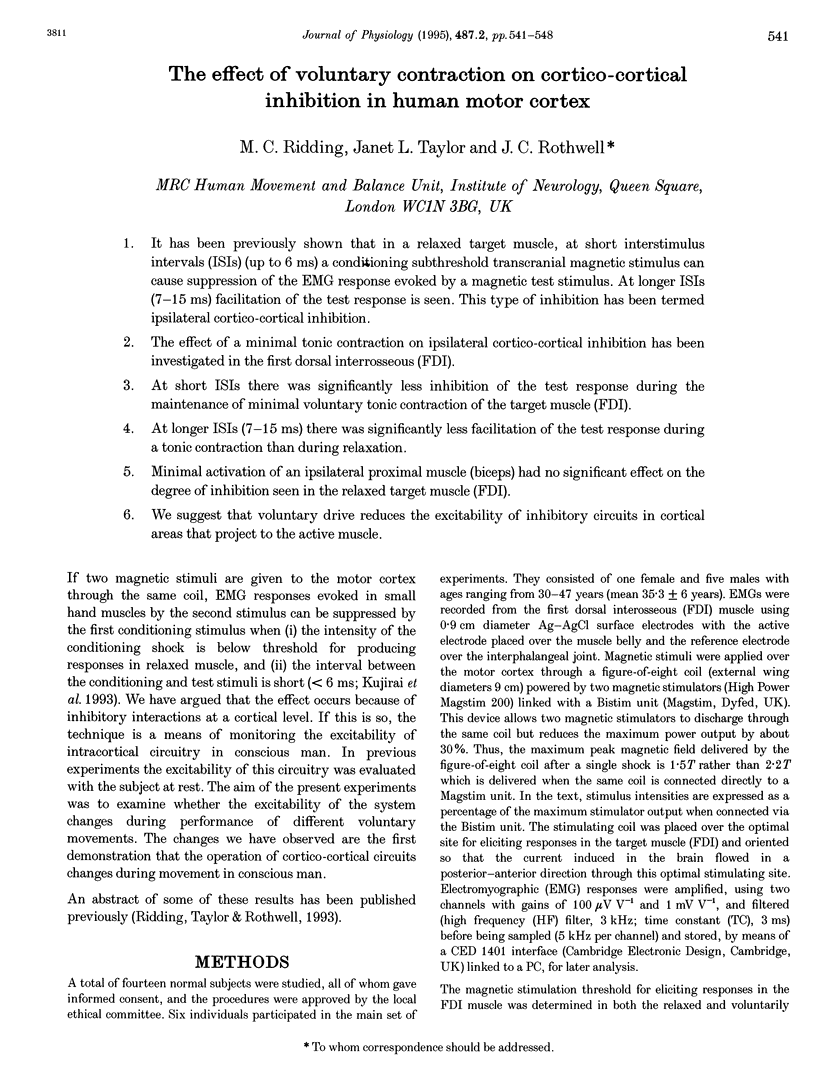
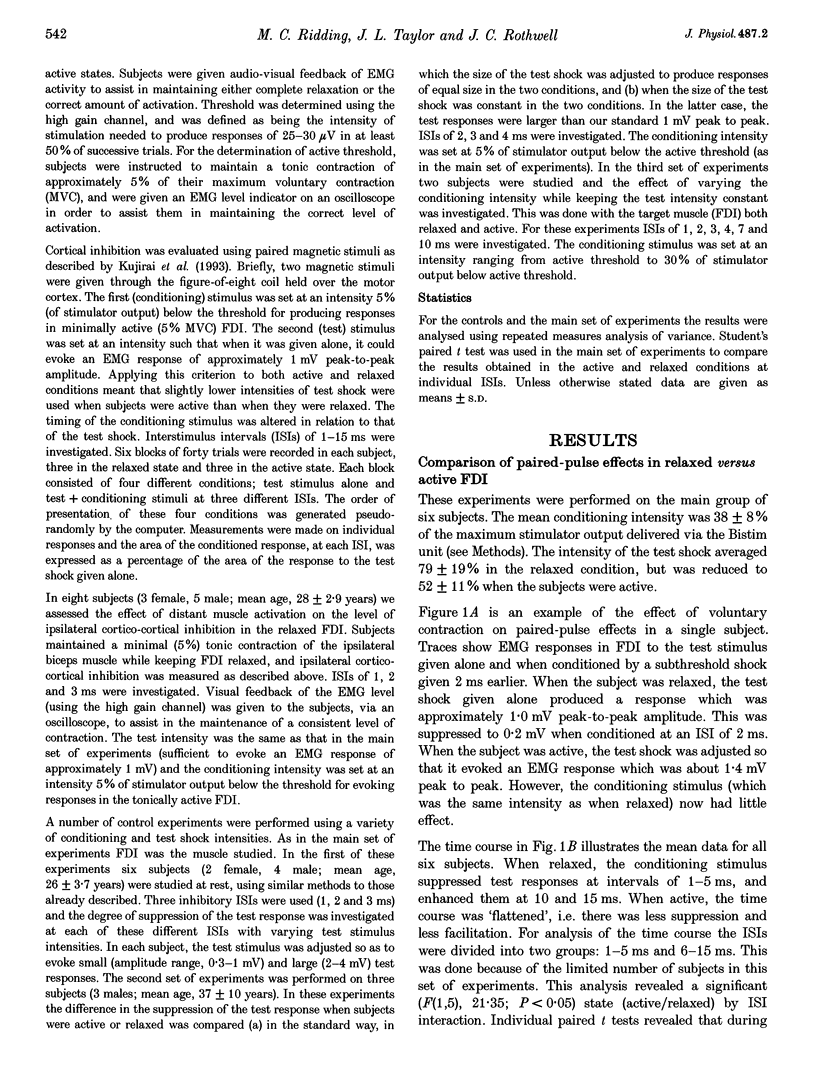
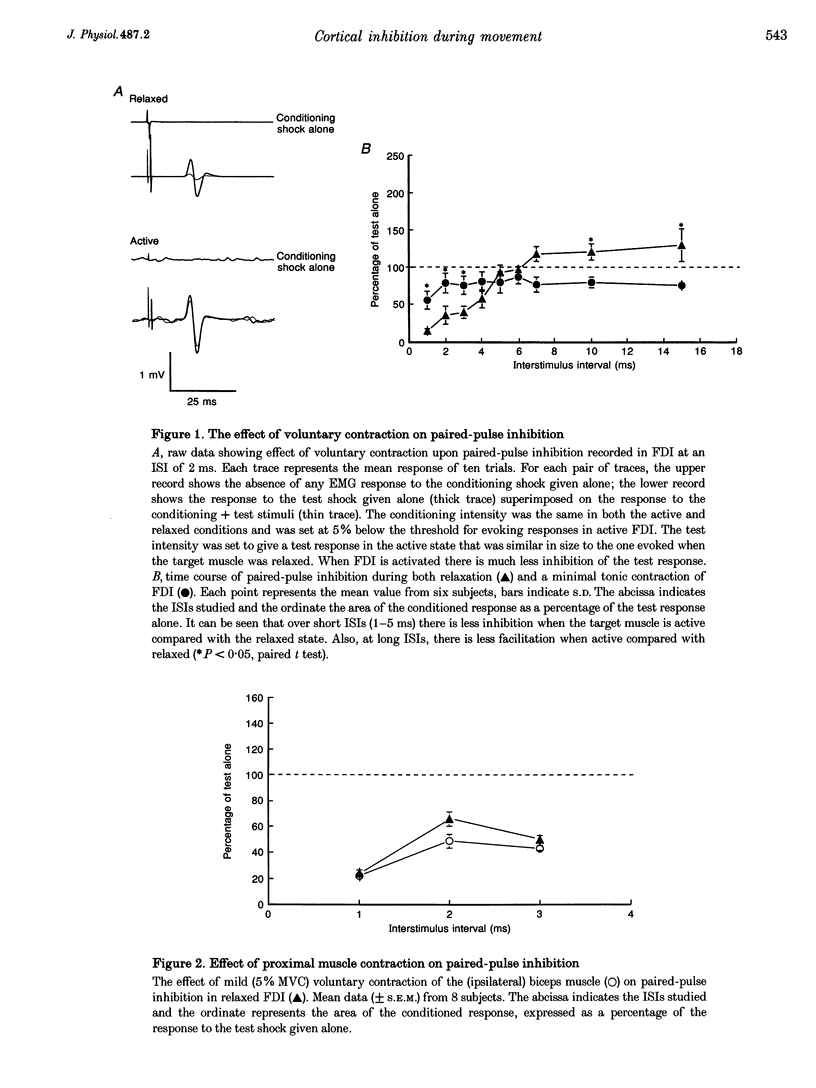

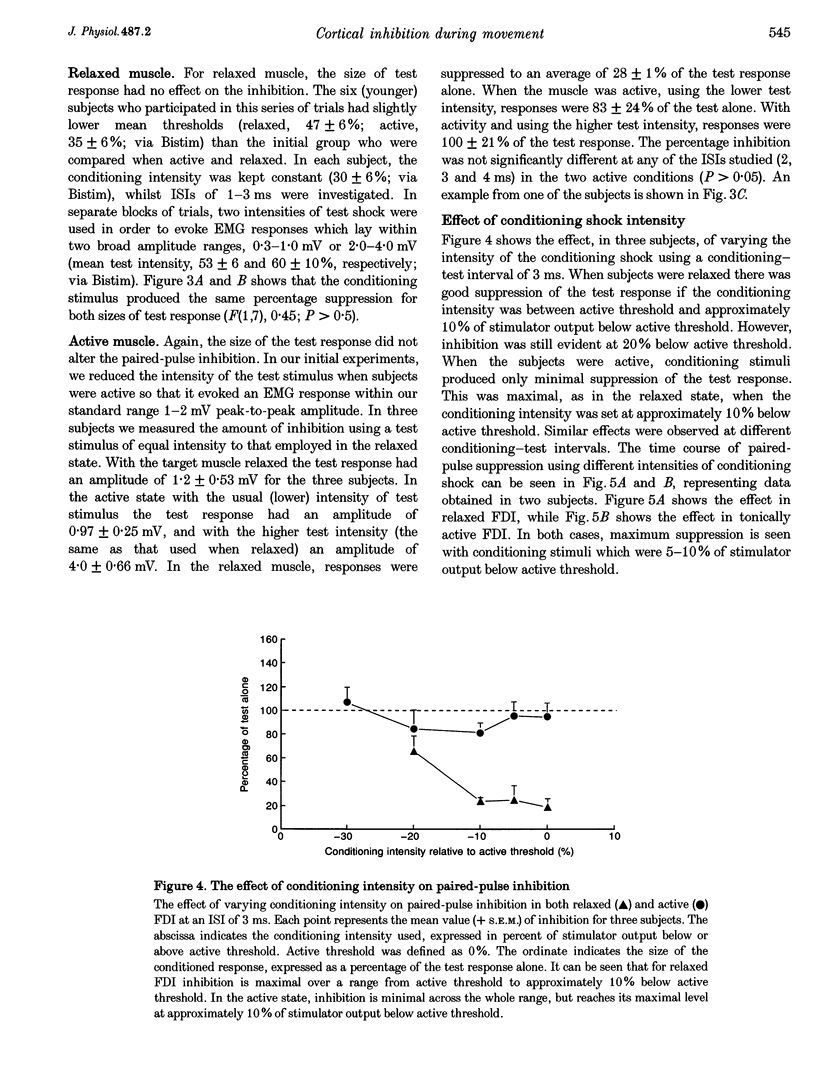
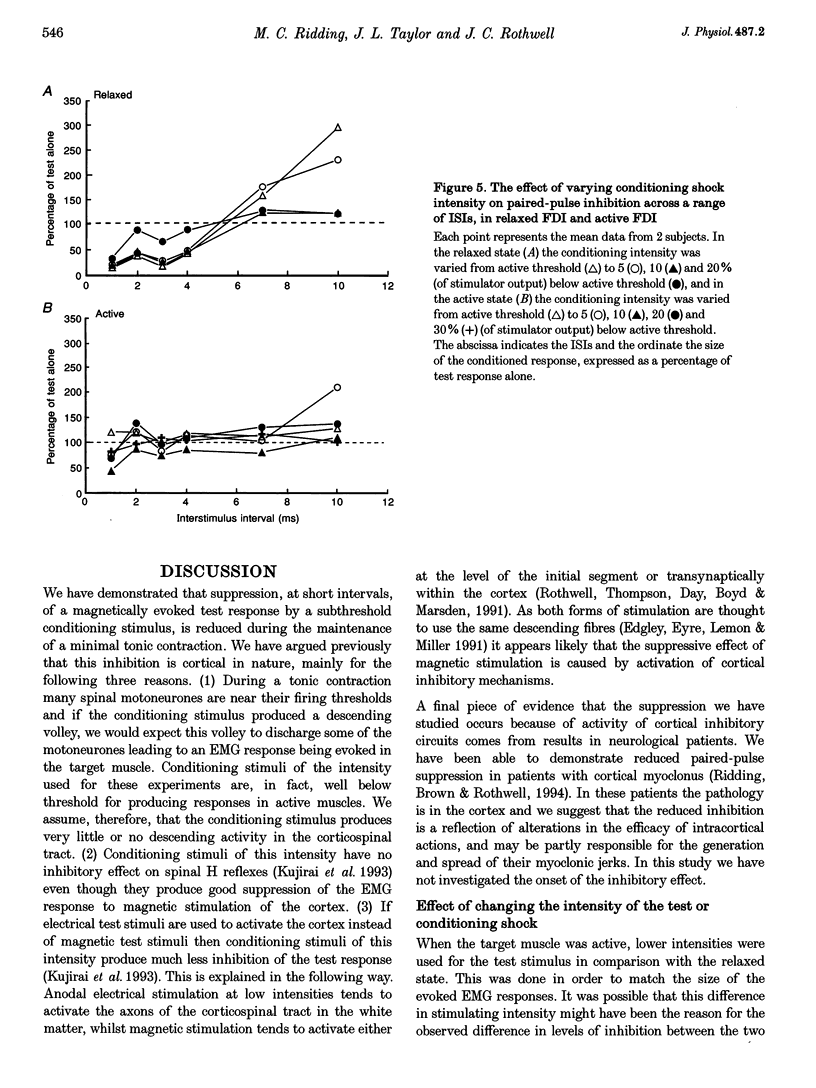
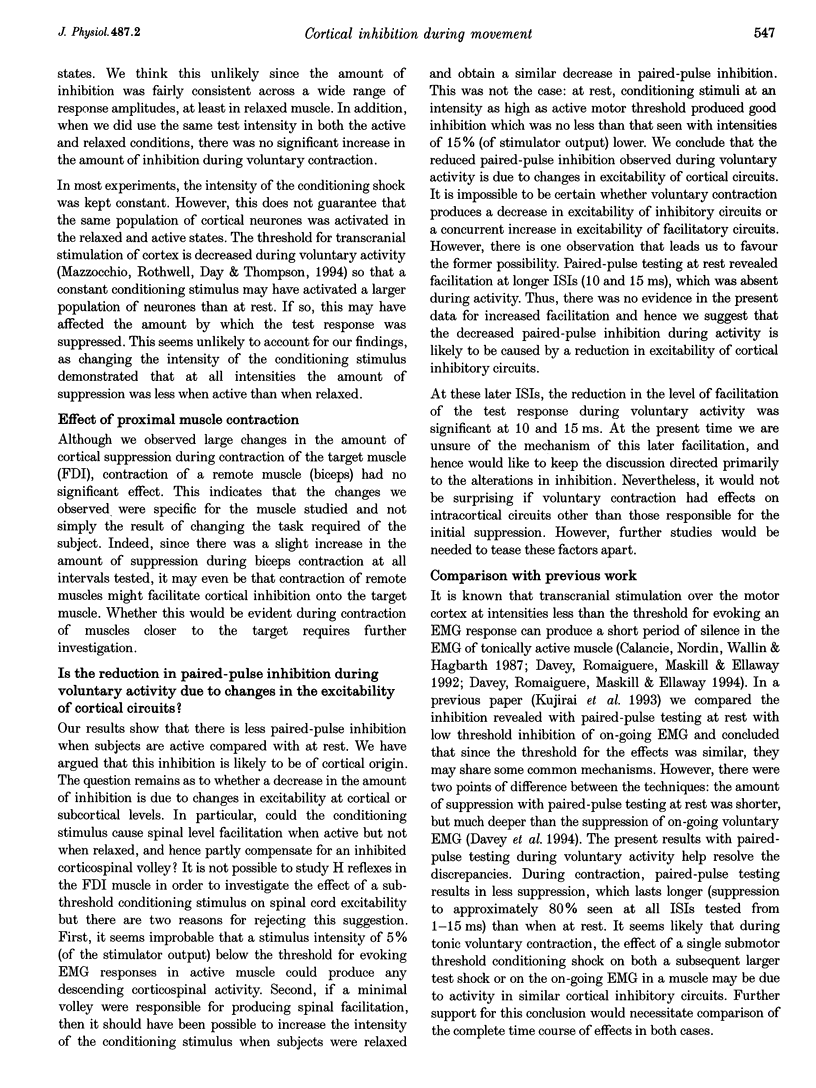
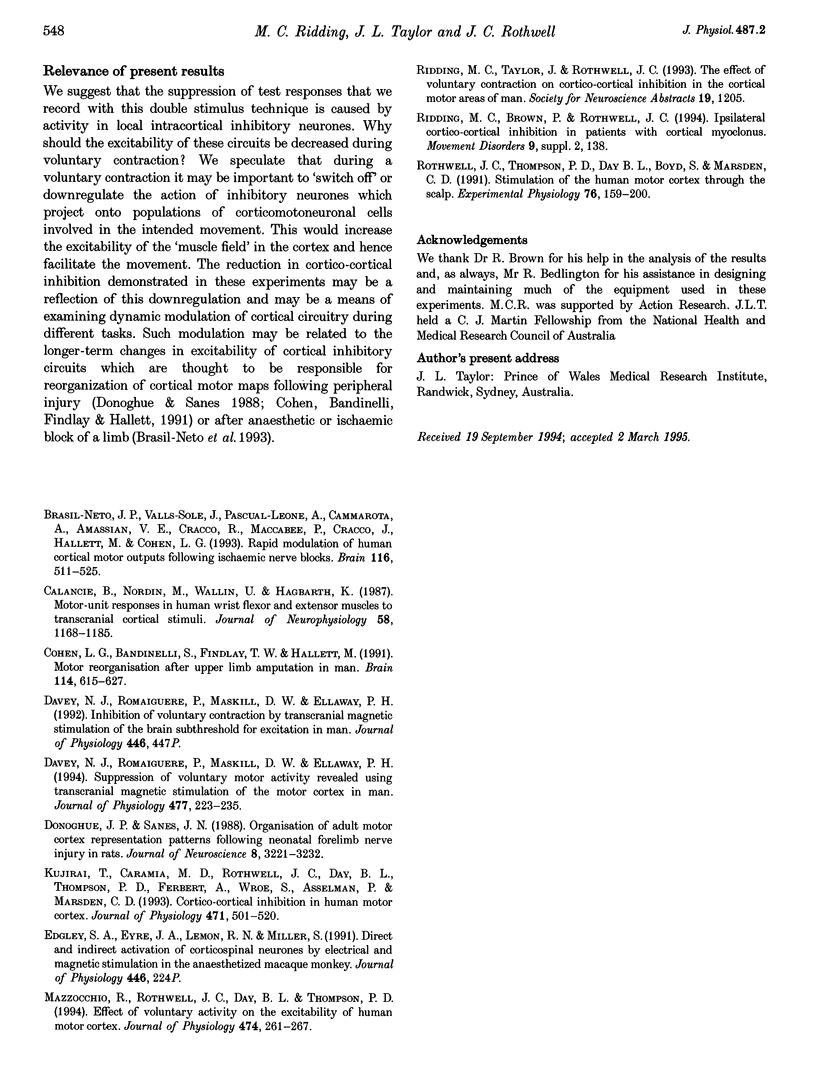
Selected References
These references are in PubMed. This may not be the complete list of references from this article.
- Brasil-Neto J. P., Valls-Solé J., Pascual-Leone A., Cammarota A., Amassian V. E., Cracco R., Maccabee P., Cracco J., Hallett M., Cohen L. G. Rapid modulation of human cortical motor outputs following ischaemic nerve block. Brain. 1993 Jun;116(Pt 3):511–525. doi: 10.1093/brain/116.3.511. [DOI] [PubMed] [Google Scholar]
- Calancie B., Nordin M., Wallin U., Hagbarth K. E. Motor-unit responses in human wrist flexor and extensor muscles to transcranial cortical stimuli. J Neurophysiol. 1987 Nov;58(5):1168–1185. doi: 10.1152/jn.1987.58.5.1168. [DOI] [PubMed] [Google Scholar]
- Cohen L. G., Bandinelli S., Findley T. W., Hallett M. Motor reorganization after upper limb amputation in man. A study with focal magnetic stimulation. Brain. 1991 Feb;114(Pt 1B):615–627. doi: 10.1093/brain/114.1.615. [DOI] [PubMed] [Google Scholar]
- Davey N. J., Romaiguère P., Maskill D. W., Ellaway P. H. Suppression of voluntary motor activity revealed using transcranial magnetic stimulation of the motor cortex in man. J Physiol. 1994 Jun 1;477(Pt 2):223–235. doi: 10.1113/jphysiol.1994.sp020186. [DOI] [PMC free article] [PubMed] [Google Scholar]
- Donoghue J. P., Sanes J. N. Organization of adult motor cortex representation patterns following neonatal forelimb nerve injury in rats. J Neurosci. 1988 Sep;8(9):3221–3232. doi: 10.1523/JNEUROSCI.08-09-03221.1988. [DOI] [PMC free article] [PubMed] [Google Scholar]
- Kujirai T., Caramia M. D., Rothwell J. C., Day B. L., Thompson P. D., Ferbert A., Wroe S., Asselman P., Marsden C. D. Corticocortical inhibition in human motor cortex. J Physiol. 1993 Nov;471:501–519. doi: 10.1113/jphysiol.1993.sp019912. [DOI] [PMC free article] [PubMed] [Google Scholar]
- Mazzocchio R., Rothwell J. C., Day B. L., Thompson P. D. Effect of tonic voluntary activity on the excitability of human motor cortex. J Physiol. 1994 Jan 15;474(2):261–267. doi: 10.1113/jphysiol.1994.sp020018. [DOI] [PMC free article] [PubMed] [Google Scholar]
- Rothwell J. C., Thompson P. D., Day B. L., Boyd S., Marsden C. D. Stimulation of the human motor cortex through the scalp. Exp Physiol. 1991 Mar;76(2):159–200. doi: 10.1113/expphysiol.1991.sp003485. [DOI] [PubMed] [Google Scholar]


